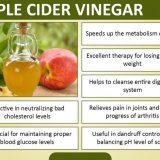In the Stone Age, most people, provided they were healthy, were well-proportioned. The foods already present in the Paleolithic era, on which the Paleo diet is based, were probably responsible for this. By switching to these foods, you can achieve healthy weight loss, which also quickly affects problem areas such as the stomach. Losing weight quickly with the Paleo diet is no great feat.
Paleo diet – the theoretical principle
Science has proven that the genetic code and diet of humans last changed around 10,000 years ago. Accordingly, the human body still uses and processes ingested food like a person would have done in the Stone Age. However, in contrast to the cultivated vegetables, salads, and fruits used today, the plants that served as food in the Stone Age still grew in the wild and had a lower glycemic content than today’s crops. As a result, the plant components of the diet, for example, had less of a negative effect on insulin levels than they do today. There was also a difference in the meat that was consumed back then, as it was much leaner than today’s breeds produce. Nevertheless, you can find healthier alternatives in your diet as part of the Paleo diet.
How the food was better in the stone age:
- ower glycemic content in Stone Age plants
- Leaner meat in the Stone Age
Lower glycemic content in Stone Age plants
Leaner meat in the Stone Age
To lose weight effectively, you should consider other tips – lose weight quickly and get fit for the day.
Principle of the Paleo diet
The basis of Paleo diet is a completely natural diet that is based on the nutritional behavior of the Paleolithic era. High-glycemic foods such as dried figs and dates are allowed in unlimited quantities.
The following can be eaten without any problems:
- Game meat
- Fruit
- Vegetables
- Fish
- Shellfish
- Seafood
- Herbs
- Nuts
- Mushrooms
- Honey
- Eggs
- Water and tea
- Chestnuts
You should avoid the following products:
- Olive oil
- Milk and dairy products
- Vegetable fat
- Margarine
- Oil
- Cereals and grain products
- Sugar
- Ready meals
- Alcoholic drinks
Paleo diet – suitable for whom?
The Paleo diet is aimed at anyone who wants to lose weight quickly, healthily, and sustainably. However, with most diets, the participants’ performance suffers. If you’re going to stay physically and mentally fit, healthy, and productive while on a diet, the Paleo diet is ideal for you.
People who suffer from metabolic and autoimmune diseases as well as diabetes or acne can follow the Paleo diet, as can people who want to stimulate their brain cells with appropriate nutrients. In addition, the Paleo diet can be tailored to any age, so that the entire family can make the dietary change together.
Key Components of the Paleo Diet
The Paleo Diet focuses on consuming natural foods like lean meats, fish, fruits, vegetables, nuts, and seeds. This diet helps you lose weight quickly and healthily by avoiding processed foods and sugars. Keep meals simple and nutrient-dense for the best results.
Adopting the Paleo Diet can be a great way to lose weight quickly and healthily. This diet focuses on consuming foods that our ancestors might have eaten. Below are some key components of the Paleo Diet that make it effective and sustainable.
Whole Foods
Eating whole foods is a core part of the Paleo Diet. These foods are unprocessed and provide essential nutrients.
- Fresh fruits: Provide natural sugars and vitamins.
- Vegetables: Rich in fiber and minerals.
- Nuts and seeds: Great sources of healthy fats and protein.
Lean Proteins
Lean proteins play a significant role in the Paleo Diet. They help build and repair muscles while keeping you full.
- Grass-fed meats: High in nutrients and healthy fats.
- Fish and seafood: Good sources of omega-3 fatty acids.
- Eggs: Packed with protein and vitamins.
Healthy Fats
Healthy fats are vital for energy and cell function. The Paleo Diet encourages the intake of natural fats.
- Avocado: Contains heart-healthy monounsaturated fats.
- Olive oil: Excellent for cooking and salads.
- Coconut oil: Great for high-heat cooking.
- Avoiding Processed Foods
The Paleo Diet emphasizes avoiding processed foods. This helps in reducing calorie intake and improving health.
Sugary snacks: Linked to weight gain and health issues.
Refined grains: Lack essential nutrients.
Artificial additives: Often harmful to the body.
Natural Sweeteners
Natural sweeteners are encouraged over refined sugars. They offer a healthier alternative for satisfying sweet cravings.
Honey: Natural and packed with antioxidants.
Maple syrup: Contains vitamins and minerals.
Stevia: Zero-calorie sweetener from plant leaves.
Dairy-free
The Paleo Diet typically excludes dairy. This can help improve digestion and reduce inflammation.
Almond milk: Dairy-free and rich in nutrients.
Coconut milk: Adds a creamy texture to dishes.
Cashew cheese: A tasty substitute for traditional cheese.
High Fiber
High fiber foods are essential in the Paleo Diet. They aid digestion and keep you full longer.
Leafy greens: Excellent sources of dietary fiber.
Berries: High in fiber and antioxidants.
Sweet potatoes: Provide fiber and essential vitamins.
Incorporating these key components of the Paleo Diet can help you achieve your weight loss goals healthily and sustainably.
Allowed Foods And Their Benefits
Eating lean meats, fish, and fresh vegetables on the Paleo diet helps shed pounds quickly and healthily. Nuts and fruits provide essential vitamins and keep you full longer.
Jumping into a new diet can feel overwhelming. The Paleo diet, however, focuses on consuming wholesome, natural foods. This approach can help you shed pounds quickly and healthily. Let’s explore the allowed foods and their benefits.
Lean Meats
Lean meats are a key component of the Paleo diet. They provide essential nutrients and keep you full longer.
Chicken: Rich in protein, low in fat.
Turkey: High in protein, boosts metabolism.
Grass-fed beef: Contains omega-3 fatty acids, supports heart health.
Pork: Provides B vitamins, aids in energy production.
Fish And Seafood
Fish and seafood are excellent sources of protein. They also offer healthy fats and vital minerals.
Eating fish regularly promotes heart health. It also helps with brain function. Additionally, seafood provides a unique mix of nutrients.
Fresh Fruits
Fresh fruits are allowed on the Paleo diet. They offer natural sugars and essential vitamins.
Apples: High in fiber, support digestion.
Berries: Packed with antioxidants, fight inflammation.
Bananas: Provide potassium, maintain electrolyte balance.
Oranges: Rich in vitamin C, boost immune system.
Vegetables
Vegetables are a staple in the Paleo diet. They are nutrient-dense and low in calories.
Eating a variety of vegetables ensures you get a range of nutrients. This helps with weight loss and overall health.
Nuts And Seeds
Nuts and seeds are great for snacking. They offer healthy fats, protein, and fiber.
Almonds: High in vitamin E, support skin health.
Walnuts: Contain omega-3s, promote brain health.
Chia seeds: Rich in fiber, aid in digestion.
Pumpkin seeds: Provide magnesium, support muscle function.
Healthy Oils
Healthy oils are crucial in the Paleo diet. They provide good fats and enhance flavor.
Using healthy oils in cooking helps absorb nutrients from food. It also keeps you satisfied longer.
Eggs
Eggs are a versatile and nutritious food. They are rich in protein and essential vitamins.
Eating eggs supports muscle building. They also help keep you full and satisfied.
Foods To Avoid And Their Impact
Foods like processed sugars and grains can hinder weight loss on the Paleo Diet. Opting for whole foods promotes quicker, healthier weight loss.
Losing weight quickly and healthily with the Paleo diet involves avoiding certain foods. Eliminating these foods can significantly impact your weight loss journey and overall health.
Processed Foods
Processed foods should be avoided. They are often high in unhealthy fats, sugar, and sodium.
High sugar content: Leads to weight gain and blood sugar spikes.
Unhealthy fats: Contribute to heart disease and obesity.
Excess sodium: Increases blood pressure and causes water retention.
Grains
Grains, such as wheat and rice, are not part of the Paleo diet. They can hinder weight loss.
High in carbohydrates: Lead to weight gain and energy crashes.
Contain gluten: Can cause digestive issues and inflammation.
High glycemic index: Spikes blood sugar and increases hunger.
Legumes
Legumes, including beans and lentils, are excluded from the Paleo diet. They contain anti-nutrients and can affect digestion.
Avoiding legumes:
Contains lectins: Disrupt gut lining and cause digestive issues.
High in phytic acid: Prevents mineral absorption and impacts bone health.
Dairy Products
Dairy products are not included in the Paleo diet. They can cause various health issues.
Lactose intolerance: Leads to bloating and discomfort.
Hormones and antibiotics: Found in conventional dairy, affect hormone balance.
High in calories: Can contribute to weight gain.
Refined Sugars
Refined sugars are a big no-no. They are linked to many health problems.
Empty calories: Provide no nutritional value and lead to weight gain.
Spikes insulin: Increases fat storage and risks of diabetes.
Addictive nature: Promotes overeating and sugar cravings.
Artificial Sweeteners
Artificial sweeteners should be avoided. They can negatively impact your health.
Disrupts gut bacteria: Leads to digestive issues and weight gain.
Increases sweet cravings: Results in overeating and poor food choices.
Linked to health issues: Such as headaches and metabolic disorders.
By steering clear of these foods, you can stay on track with the Paleo diet and achieve your weight loss goals effectively.
Health Benefits of the Paleo Diet
The Paleo diet helps you lose weight quickly and healthily by focusing on natural, unprocessed foods. This diet boosts metabolism and energy levels, making weight loss easier and more sustainable.
The Paleo Diet, inspired by our hunter-gatherer ancestors, is more than a fad. It focuses on whole, unprocessed foods that our bodies are naturally meant to consume. Let’s explore the numerous health benefits this diet offers.
Improved Blood Sugar Levels
Maintaining healthy blood sugar is crucial for overall health. Here’s how the Paleo Diet helps:
Low Glycemic Foods: Reduces blood sugar spikes and crashes.
High Fiber Intake: Improves insulin sensitivity and glucose control.
No Processed Sugars: Prevents insulin resistance and diabetes.
Enhanced Weight Loss
Many people turn to the Paleo Diet for weight loss. Here’s why it works:
High Protein: Keeps you full longer, reducing calorie intake.
Healthy Fats: Promotes fat burning and satiety.
No Empty Calories: Eliminates junk food and sugary drinks.
Better Heart Health
A strong heart is essential for longevity. The Paleo Diet supports heart health in various ways:
Omega-3 Fatty Acids: Found in fish, reduce inflammation and improve cholesterol.
Antioxidant-Rich Foods: Vegetables and fruits protect heart tissues.
Low Sodium: Minimizes the risk of high blood pressure.
Increased Energy Levels
Feeling sluggish? The Paleo Diet can boost your energy:
Nutrient-Dense Foods: Provide vitamins and minerals for sustained energy.
Balanced Meals: Stable blood sugar levels prevent energy dips.
No Processed Foods: Avoids energy-draining additives and preservatives.
Reduced Inflammation
Chronic inflammation can lead to various health issues. The Paleo Diet helps reduce it:
Anti-Inflammatory Foods: Like berries and leafy greens.
Healthy Fats: Such as those from nuts and seeds.
Avoids Inflammatory Triggers: No refined sugar or processed foods.
Improved Digestive Health
Gut health is vital for overall wellness. The Paleo Diet promotes a healthy digestive system:
High Fiber: From vegetables and fruits, promotes regular bowel movements.
Healthy Fats: Aid in nutrient absorption.
No Gluten: Reduces digestive discomfort and bloating.
Enhanced Mental Clarity
Mental clarity can significantly impact your daily life. The Paleo Diet boosts brain function:
Healthy Fats: Like those from avocados, support brain health.
Nutrient-Rich Foods: Provide essential vitamins and minerals for cognitive function.
No Processed Sugars: Prevents brain fog and concentration issues.
Stronger Immune System
A strong immune system is crucial for fighting off illnesses. The Paleo Diet strengthens it:
Antioxidants: From fruits and vegetables, protect against free radicals.
Healthy Proteins: Support immune cell function.
No Additives: Avoids immune-compromising chemicals.
Weight Loss And Body Composition
Lose weight quickly and healthily with the Paleo Diet. Focus on whole foods like lean meats, fruits, and vegetables. Improve body composition by avoiding processed foods and sugars.
The Paleo Diet is a popular way to lose weight quickly and healthily. This diet focuses on eating like our ancestors. It includes lean meats, fish, fruits, vegetables, nuts, and seeds. It excludes processed foods, grains, and dairy. Many people find this diet effective for weight loss and improving body composition.
Reducing Body Fat
Reducing body fat is a key benefit of the Paleo Diet. This diet encourages whole foods and natural ingredients. Here are some ways it helps reduce body fat:
High protein intake: Protein keeps you full longer, reducing overeating.
Low carbohydrate intake: Fewer carbs mean less stored fat.
Healthy fats: Healthy fats from nuts and seeds boost metabolism.
No processed foods: Processed foods are high in calories and low in nutrients.
Increasing Muscle Mass
Increasing muscle mass is another benefit. The Paleo Diet supports muscle growth in several ways.
High protein foods: Lean meats and fish help build muscle.
Nutrient-rich vegetables: Vegetables provide vitamins and minerals for muscle repair.
Healthy fats: Fats from avocado and nuts support muscle health.
No artificial additives: Avoiding additives helps keep muscles strong.
Improving Metabolism
Improving your metabolism can speed up weight loss. The Paleo Diet boosts metabolism by focusing on natural, whole foods.
Protein-rich foods: Protein requires more energy to digest, boosting metabolism.
Fiber-rich foods: Fiber from fruits and vegetables helps regulate digestion.
Healthy fats: Fats like omega-3s improve metabolic rate.
Avoiding sugars: No refined sugars means fewer metabolic slowdowns.
Reducing Inflammation
Reducing inflammation is crucial for weight loss. The Paleo Diet is anti-inflammatory, which helps in many ways.
Natural foods: Whole foods reduce inflammation.
Omega-3 fats: Fish and nuts have anti-inflammatory properties.
No processed sugars: Processed sugars increase inflammation.
Antioxidant-rich foods: Fruits and vegetables fight inflammation.
Controlling Appetite
Controlling appetite is essential for weight loss. The Paleo Diet helps control hunger and cravings.
High protein: Protein keeps you full longer.
Fiber-rich foods: Fiber helps you feel full.
Healthy fats: Fats keep hunger at bay.
No processed foods: Processed foods cause cravings.
By focusing on natural, whole foods, the Paleo Diet supports weight loss and improves body composition. It reduces body fat, increases muscle mass, boosts metabolism, reduces inflammation, and controls appetite. Give the Paleo Diet a try to see these benefits for yourself.
Effects On Insulin And Metabolism
The Paleo diet helps manage insulin levels and boosts metabolism. It emphasizes whole foods, reducing sugar spikes. This promotes steady energy and weight loss.
The Paleo Diet has gained popularity for its potential health benefits. One of its key advantages is its impact on insulin and metabolism.
How The Paleo Diet Affects Insulin Levels
Switching to a Paleo Diet can significantly influence insulin levels. Here are some ways it works:
Reduced carb intake: Lower carbohydrates mean less insulin production.
No processed foods: Eating whole foods helps maintain stable insulin levels.
High protein: Protein-rich foods help control blood sugar.
Metabolism Boost With The Paleo Diet
The Paleo Diet can also boost your metabolism. This can lead to quicker and healthier weight loss. Here’s how it helps:
Lean proteins: Increase in muscle mass, boosting metabolism.
Healthy fats: Fats provide long-lasting energy.
Nutrient-dense foods: Improve overall metabolic function.
Balancing Blood Sugar Levels
Eating Paleo can help balance blood sugar levels. This is crucial for weight management. Key factors include:
Fiber-rich vegetables: Promote steady blood sugar.
Avoiding sugar: Keeps blood sugar from spiking.
Regular meals: Prevents drops in blood sugar.
Benefits Of Whole Foods
Whole foods are a staple of the Paleo Diet. They offer numerous benefits:
Nutrient density: Packed with vitamins and minerals.
Satiety: Keeps you full longer, reducing calorie intake.
Natural state: Unprocessed, preserving nutrients.
By focusing on these aspects, the Paleo Diet can aid in weight loss. It supports stable insulin levels and boosts metabolism, making it a valuable approach for many.x`
Benefits and Constraints of the Paleo Diet
Benefits Constraints
Quick and healthy weight loss Restrictive dietary choices
Improved physical and mental fitness Excludes dairy, grains, and legumes
Suitable for metabolic and autoimmune conditions Can be challenging to follow in modern society
Natural and unprocessed food choices May be more expensive
Can be tailored to any age group Limited availability of certain foods
Conclusion on the Paleo diet
The Paleo diet should not be seen as a diet in the truest sense, but rather as a change in diet. Even if the signs in modern times look different than for the ancestors in the Stone Age, the nutritional basis of the Stone Age people can be understood through the targeted selection of foods. And who has ever seen a Stone Age man with a beer belly?














